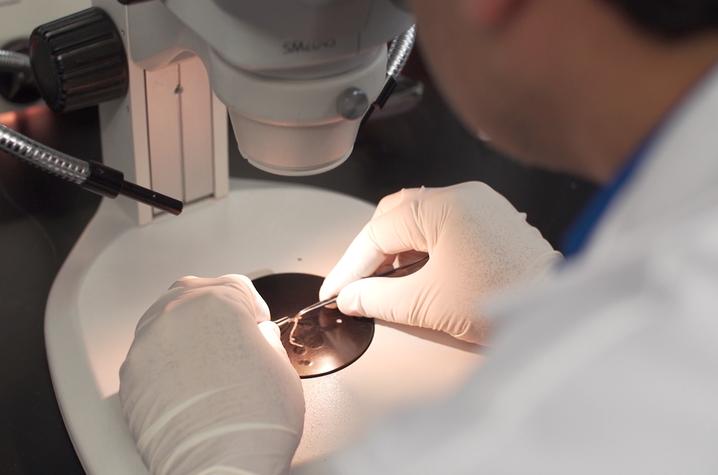Al-Siraj’s Sex Chromosome Study Published in Circulation
LEXINGTON, Ky. (Dec. 14, 2016) — Yasir Al-Siraj, a Ph.D. candidate in the University of Kentucky College of Medicine Department of Pharmacology and Nutritional Sciences, is the lead author of a paper published in Circulation, a leading journal on cardiovascular medicine.
The article, “Female Mice with an XY Sex Chromosome Complement Develop Severe Angiotensin II-Induced Abdominal Aortic Aneurysms,” was co-authored by UK colleagues Sean E. Thatcher, Richard Charnigo, Kuey Chen, Eric Blalock, Alan Daugherty and Lisa Cassis.
Al-Siraj said about Circulation, “It is very respected in the scientific community, and this journal has only an 8 percent acceptance rate, with a bias towards clinical studies. So, the fact that my paper got accepted in this journal, means that there is a high quality of work and a relevance to human disease.”
Cassis, Al-Siraj’s research mentor in pharmacology and nutritional sciences and the vice president for research at UK, said, “The results described in the manuscript, which examine effects of genes residing on sex chromosomes as contributors to the sex differences we see in abdominal aortic aneurysms, contributed to the recent renewal of NIH funding to my laboratory from the Heart, Lung and Blood Institute.” That NIH funding, totaling $1,677,026 supports innovative research focusing on the sex differences in abdominal aortic aneurysms (AAA).
“Most investigators that are studying sex differences in different biologic processes and diseases are focused on sex hormone effects," said Al-Siraj. "However, genes that are on sex chromosomes represent another fundamental difference between males and females, but this area has not been investigated in vascular diseases.”
AAAs are a permanent dilation in the abdominal region of the aorta—the largest artery in the body. This disease affects more than 1.1 million people in the U.S. between the ages of 50 and 84, and ruptures kill 85 percent of people with AAAs.
Simply being male is the strongest non-modifiable risk factor for AAAs. “That’s a big sex difference. That’s why we’re trying to understand why males are more susceptible, and why females are protected from this disease,” Al-Siraj said.
The UK researchers used a novel mouse model that produces XX or XY females. By removing the ovaries in these animals, the team could eliminate the effects of their sex hormones and isolate the sex chromosome effects. Al-Siraj explained, “When we infused XY females with angiotensin II in order to induce AAA formation, we found that AAA incidence and rupture were doubled and over 70 percent of XY females were dying due to aneurysm rupture.
“This work has therapeutic implications for the use of sex hormones in aging populations, in transgender individuals, and, may potentially help us identify sex-specific therapeutics to treat common cardiovascular diseases. Importantly, this study advanced the basic knowledge of sex chromosome effects on vascular biology.”
He explained the next steps in this research will be to test the efficacy of either blocking or stimulating two gene targets influenced by sex chromosome complement on the formation and the progression of AAAs.






